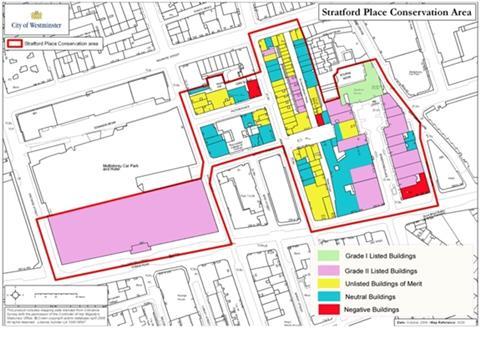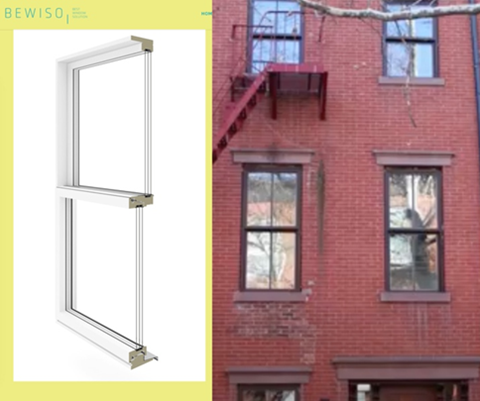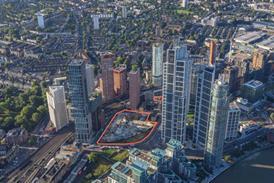The heritage advisor’s new guidance on how to retrofit historic buildings without harming them includes some welcome details but leaves too much to interpretation, writes climate and heritage specialist Chris Procter
Historic England has just published its new Advisory Note 18 “Adapting Historic Buildings for Energy and Carbon Efficiency”. I have been following its development and, in Nov 2023, I commented on the public draft consultation when it was titled “Climate Change and Historic Building Adaptation”.

The scope of this heritage Advisory Note covers 10% of all English homes, with 32,000 (0.11%) Grades I & II*, 368,000 (1.3%) Grade II, and 2,400,000 (8.6%) unlisted conservation area homes.
> Also read: Historic England publishes advice note on decarbonising heritage assets
There are some welcome additions such as shading devices and the acceptance of discretely located heat pumps on front façades, however, it still leaves much interpretation to underfunded councils. Not addressed are window technologies for varied building types or conditions, and most importantly, clearer assessment of heritage significance. Very little attention is given to the 2,400,000 unlisted buildings, some of which are negative contributors to the significance of the conservation area. This shows a lack of ambition by Historic England to tackle its 10% sector share with emergency measures to ensure we do not breach 1.5C global warming targets.
Significance and degree of harm in heritage are value judgments which are difficult to assess, often leaving them to inefficient planning appeals. The report glossary states, “Significance - the value of a heritage asset to this and future generations” and minor harm to significance is mentioned in clause 75, “without unacceptably harming”. In other words, protection of future generations will enable heritage to have a future only if acceptable minor harm is fully explored.
The unlisted 2,400,000 (8.6%) properties, are only given a few paragraphs in this 41-page report. The Glossary states, unlisted buildings “not included on the national list of buildings identified as being of special architectural or historic interest” and in clause 107 Historic England states: “Where planning permission is required, the same general approach should be taken with works to unlisted buildings in conservation areas as with listed buildings.”

Lack of specific unlisted building advice is problematic. Small changes for 2,400,000 unlisted buildings can provide substantial carbon reduction with less harm to significance. Listed buildings, 1.4% of homes, unable to achieve complete net zero, will need to be carbon offset from other sectors. We can’t afford to offset a further 8.6% of our housing when transport and other sectors are struggling to electrify.
This report does not reinforce positive/negative conservation area appraisals. A good conservation area appraisal can identify and promote what is possible for higher levels of environmental retrofit, a valuable lesson I learned from my research “The Climate Emergency Conservation Area Toolkit” published by ACAN Feb 2023.
Positive/negative appraisals that allow opportunities for ‘beneficial change’ in conservation areas are recommended by both UK “PPG 23 July 2019” and Historic England’s “Conservation Area Appraisal, Designation and Management 2019”. This current practice for good conservation area management seems to have been ignored in the final HEAN clause 22 statement that, “Some appraisals include, or are accompanied by, guidelines on managing change’, rather than as in draft where it stated that conservation area appraisals ‘should also provide some general guidelines on managing change’.
Missing entirely is the concept of public realm versus private realm. Rear facades in the private realm provide a missed opportunity for greater retrofit as they are not visible to the public. External insulation protects solid walls from cold-bridging and condensation better than other methods, but Clause 89 states, “External wall insulation is unlikely to be acceptable.” “A Bristolian’s Guide to Solid Wall Insulation” 2015, shows the scope of technical details that should be part of a more complete Historic England Advise Note.

Window solutions are incomplete. Clause 82 states, “Many historic buildings have windows which are relatively recent…In such cases, their replacement with double glazing is likely to have a neutral impact or enhance significance.” This recognition is welcome but, only accepts new double glazing whereas, it mentions vacuum glazing later for pane replacement. The scope of this guide is too restrictive and must include diverse heritage window types, such as large Victorian plate glass, that could be triple glazed.
Historic England seems to not understand window technology. Their preferred, Slimline double glazing with a narrow glass spacer bar can lead to leakage and fogging. Regular double and passivhaus level triple glazing with wider spacing bars are less prone to failure and come in conservation designs suitable on unlisted and some listed buildings. Vacuum windows, the latest tech, have even more robust edge seals and can approach triple glazing performance. Thin glazing bars 16-18mm can be exactly duplicated which is impossible with slimline glazing as they need a minimum of a 22mm bar. This tech is best as one large pane set into a sash with integrated sash glazing bars one side and bars applied securely other side. Vacuum glazing with 6.3-8.3mm thickness appears as a single pane ideal for heritage unlike 14mm thick slimline.

This advice note is a missed opportunity for Historic England to fully embrace the climate crisis and partner in the wider national debate. Collaboration, learning, and knowledge exchange is needed, such as linking Historic England website case studies to the National Retrofit Hub database. There are positive steps as outlined, but to seriously address the climate emergency and effectively guide English councils Historic England needs to recognize and correct major policy gaps with a revised HEAN.
Postscript
Chris Procter is co-founder of Procter Rihl Architects, which specialises in low carbon retrofit, newbuild and urban realm projects
















1 Readers' comment